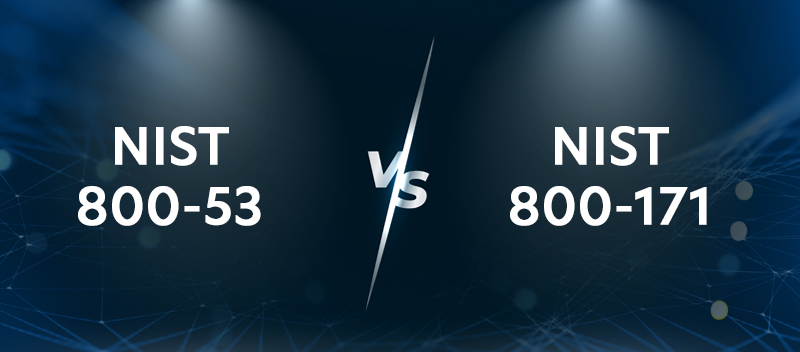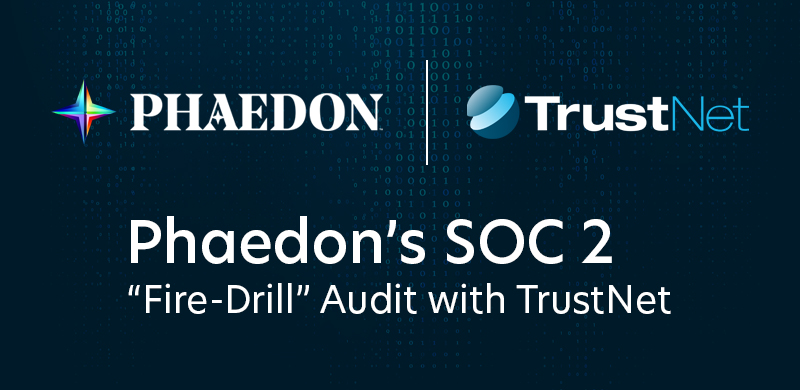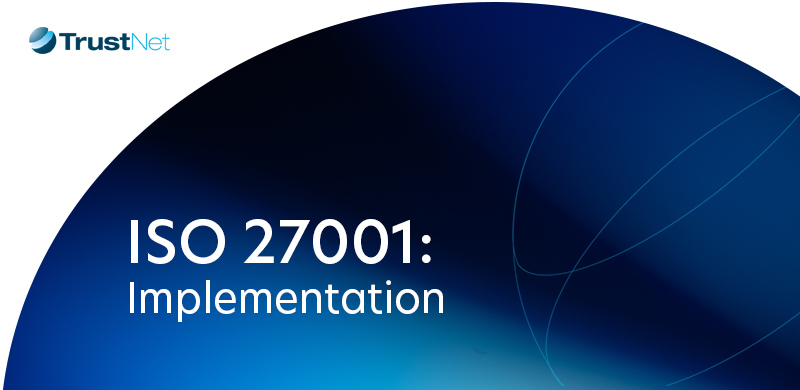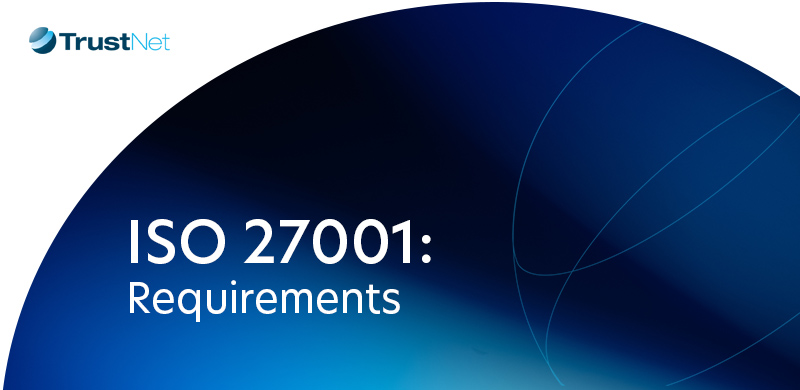Navigating NIST 800 Series: Comparing 800-53 and 800-171 Security Standards

The NIST 800 series provides an essential foundation for enhancing cybersecurity procedures in all sectors. Among its key publications, NIST 800-53 and 800-171 often leave organizations questioning their differences and specific applications.
Frankly, sensitive data protection requires both standards, but choosing the right one can be challenging. Is your company having trouble deciding which standard to use or having trouble putting its standards into practice?
This guide breaks down the nuances of 800-53 and 800-171, offering a clear side-by-side comparison. By being aware of these differences, you’ll be in a better position to improve compliance plans and successfully safeguard important data assets.
Understanding NIST 800-53
Federal information systems are secured using the fundamental architecture provided by NIST 800-53. Its goal is to standardize rules that protect data availability, confidentiality, and integrity. Agencies, contractors, and service providers are among the organizations that rely on this approach to efficiently manage risks in federal ecosystems.
Key Features of NIST 800-53
-
- Scope: This framework is specifically designed for federal information systems and those working directly with them.
- Number of Control Families: NIST 800-53 includes 20 control families. These cover essential areas like access control, incident response, risk assessment, awareness and training, security assessment, and more.
- Detailed Guidance: Each control is highly detailed, enabling organizations to customize their security strategies to meet specific risks and operational needs.
Why Compliance Matters
Compliance with NIST 800-53 is mandatory for federal agencies and their partners. Legal compliance is just the tip of the iceberg as it protects sensitive data and avoids costly penalties. The framework’s thorough approach creates a solid security baseline and ensures that the organization is resilient in the face of new and emerging threats.
For more on our NIST penetration testing services, Click Here
Understanding NIST 800-171
NIST 800-171 was crafted to secure Controlled Unclassified Information (CUI) that is stored or processed in non-federal systems. Its purpose is to ensure such organizations meet stringent data security requirements when handling CUI on behalf of the federal government.
Key Features of NIST 800-171
-
- Scope: Focuses on protecting CUI within non-federal systems.
- Number of Control Families: Encompasses 17 families of security requirements. These include Planning, System and Services Acquisition, Supply Chain Risk Management, Security Assessment and Monitoring, and more.
- Number of Security Requirements: Includes 110 security requirements designed to establish a solid baseline for data protection.
Why Compliance Matters
Compliance with NIST 800-171 isn’t always mandatory unless dictated by contracts like those under the Defense Federal Acquisition Regulation Supplement (DFARS).
Compliance with NIST SP 800-171 is not always mandatory unless specified by contracts, such as those under the Defense Federal Acquisition Regulation Supplement (DFARS). However, there is a broad spectrum of entities that generally need to comply to ensure the protection of controlled unclassified information (CUI).
Entities requiring compliance with NIST SP 800-171 include:
-
- Government Contractors for agencies like the Department of Defense (DoD), General Services Administration (GSA), and National Aeronautics and Space Administration (NASA).
- Educational and Research Institutions that work with U.S. federal data or receive federal funding, grants, or research contracts.
- Service Providers in industries such as defense contracting, financial services, healthcare data processing, web hosting, communications, and systems integration.
- Manufacturers and Consultants holding contracts with U.S. federal agencies that involve access to or handling of CUI.
- Logistics and Supply Chain Providers supporting government facilities or operations, particularly those connected to defense agencies.
Complying with NIST SP 800-171 is critical to safeguarding CUI within government-linked networks, which strengthens overall national security. Organizations working specifically with the DoD and handling CUI must also adhere to DFARS 252.204-7012 and NIST SP 800-171, regardless of contract value or size.
Failure to comply can result in significant consequences, such as losing contracts or being disqualified from future bids. Additionally, organizations must notify the DoD Chief Information Officer within 30 days of receiving a contract if they cannot meet specified compliance requirements. This notification must detail areas of non-compliance. Beyond contractual risks, non-compliance can compromise an organization’s reputation and operational integrity.
Key Differences Between 800-53 and 800-171
While NIST 800-53 and NIST 800-171 aim to enhance security, their differences lie in their purpose, audience, and implementation requirements. Here’s a breakdown of their key distinctions:
1) Target Audience
-
- NIST 800-53: Designed for federal agencies and organizations directly operating within federal information systems.
- NIST 800-171: Tailored for non-federal entities handling Controlled Unclassified Information (CUI), such as contractors or third-party providers under agreements like DFARS.
2) Scope of Application
-
- 800-53: Broadly applies to federal information systems, covering all aspects of security management and operations.
- 800-171: Focuses specifically on protecting CUI within non-federal systems, providing a more streamlined set of requirements tailored to external partners.
3) Number and Complexity of Controls
— NIST 800-53:
-
- Contains over 1,000 security controls divided into 20 control families.
- Offers highly detailed guidance and customization options for a comprehensive approach to data protection and risk management.
— NIST 800-171:
-
- Features 110 requirements across 17 families, addressing key areas like planning, supply chain risk management, and security monitoring.
- Simplifies implementation while ensuring the fundamental protection of CUI.
Compliance Requirements
Mandatory vs. Optional:
-
- Compliance with NIST 800-53 is mandatory for federal agencies, with non-compliance leading to severe penalties.
- NIST 800-171 compliance is both contract-dependent and mandatory for some, failing to meet these standards can result in contract loss or legal action.
- Level of Detail: 800-53 enforces detailed controls, while 800-171 focuses on high-level security goals.
Summary
Both frameworks are essential in their respective domains. NIST 800-53 delivers comprehensive safeguards for federal systems, while NIST 800-171 provides organizations handling CUI with a focused approach to meet critical security expectations. Combined, they strengthen the overall cybersecurity landscape.
When to Use 800-53 vs. 800-171
Choosing between NIST 800-53 and NIST 800-171 depends on your organization’s role and the type of information you handle. While both frameworks aim to strengthen security, their application scenarios vary.
Scenarios for Using NIST 800-53
- Federal Information Systems: NIST 800-53 is mandatory for federal agencies managing sensitive government systems and data.
- Comprehensive Cybersecurity Programs: Agencies or organizations seeking an expansive framework with over 1,000 controls benefit from the detailed guidance offered by 800-53.
- Encouraged for Contractors in Federal Ecosystems: Contractors may also implement 800-53 when operating systems are integrated into federal environments.
Scenarios for Using NIST 800-171
-
- Handling Controlled Unclassified Information (CUI): If your organization processes CUI on behalf of the federal government, 800-171 outlines the required safeguards.
- Simplified Compliance: Non-federal entities often use 800-171 when contractually required but prefer its concise and manageable 110 requirements.
- Commercial Partners with Limited Scope: Organizations with isolated CUI handling can prioritize 800-171 without implementing broader federal compliance frameworks.
Overlap Situations
Contractors working closely with federal agencies may find themselves navigating both frameworks. For instance, while managing CUI under NIST 800-171, they might also adopt elements of 800-53 to align with government requirements or proactively boost cybersecurity resilience.
In the end, you should understand the distinct roles and occasional overlap so you can ensure effective compliance to meet government expectations and secure your operations.
Implementation Challenges and Best Practices
Adopting NIST 800-53 or 800-171 can be a complex process for many organizations. Allocating resources, negotiating the complexity of rules, and guaranteeing continuous compliance are typical challenges.
Also, these frameworks’ extensive scope sometimes necessitates a large commitment of time, money, and skill, particularly for smaller firms. Obstacles may also arise from interpreting certain needs and integrating them with current systems.
Tips for Successful Implementation
-
- Start with a Gap Analysis: Assess your current security posture to identify areas requiring improvement before implementing the standards.
- Thorough Planning: Develop a clear roadmap for implementation, including defined roles, responsibilities, and timeline milestones.
- Invest in Training: Conduct regular training to ensure teams understand responsibilities and compliance requirements.
- Leverage Technology: Use automation tools to streamline processes like risk assessments, monitoring, and documentation.
- Regular Audits: Perform periodic checks to maintain compliance and adapt to updated requirements.
Ensuring the Right Fit for Your Security Needs
Choosing between NIST 800-53 and 800-171 is crucial for aligning your organization with the appropriate security standards. Selecting the right framework ensures effective compliance and robust cybersecurity.
Don’t leave your security to chance — partner with experts who understand your needs. Contact us and explore our NIST solutions today.
Subscribe to the TrustNet Newsletter
actionable cybersecurity strategies, and TrustNet’s cutting-edge solutions.




